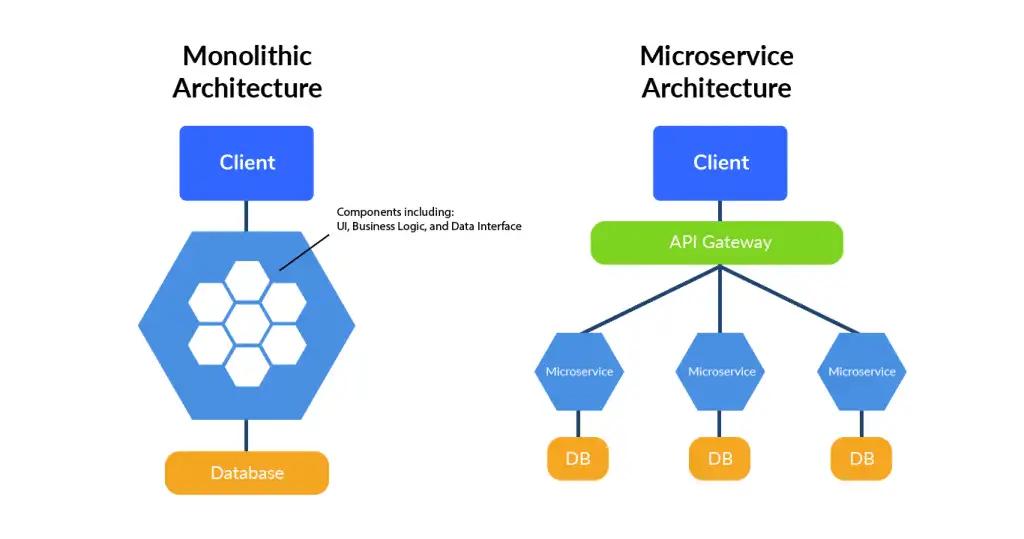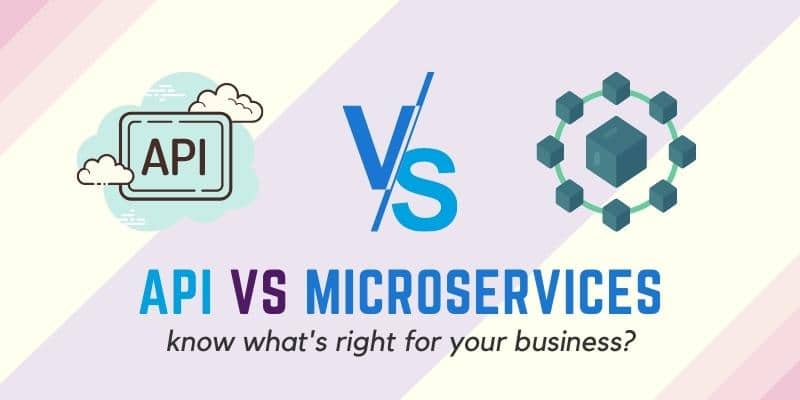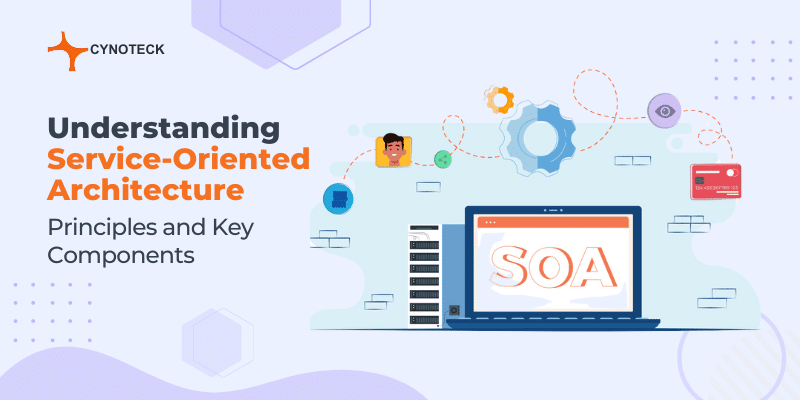Are you confused between the terms “Microservices” and “API” in technical discussions? It’s more general than you think. It’s reasonable to confuse the concepts, but understanding the difference between the two helps to address existing business problems, find practical solutions, and hold more productive meetings overall.
This Blog will provide you the knowledge about what APIs are and what Microservices are. Next, you’ll see how the two terms work together and how they differ.
When designing a mobile app, you have to decide how to connect it to the rest of the services. The typical choices are to create a Microservice or use an API. Each of them has its benefits and drawbacks. But, as we can see, sometimes Microservices work better in some cases, and APIs do better in other cases.
So, which one should you choose, Microservices Vs API? Let’s see:
What is an API?
First of all, before starting the discussion of Microservices vs API, you should understand the basic meaning of both terms. API or you say Application Programming Interface has many types or comes in many forms.
When someone says “API“, they can say anything from private APIs to public APIs, or SOAP APIs to RESTful APIs. Now you may realize and understand why so many people confuse this?
Basically, the API allows two software components to send and receive messages and data in a structured way without the need for human intervention or manual data entry. When we talk about software integration, we often use APIs to enable this software to communicate.
To make this easier to understand, let’s talk about the most commonly used APIs in the context of REST APIs and how they are used in microservices architectures. When talking about typical state transfer (REST) APIs or RESTful APIs, they refer to specific API styles.
The REST API provides a stateless messaging path between applications. This architecture requires that all messages passed between applications be completely self-contained.

The Google Maps API and Twitter API are examples of publicly available REST APIs. Another idea is that the API is a way for your application to communicate with external services such as Google Maps and Twitter using a set of commands and well-defined methods. This allows you to seamlessly add specific features that other users have created for your application or software.
Let’s explain the API using the analogy. Think about the lamp maker. You don’t need to know how to make an outlet or how to generate and transmit electricity. They know that just make a lamp with the correct power cord (according to industry-standard specifications) and the outlet will provide the power needed for the lamp to work properly. It is the power cord that the outlet and the lamp can interact with.
The API is the power cord for your application. This is the connection that allows your application to receive the data and messages it needs to function properly.
Here is a more specific example. Suppose you want to create the following rideshare app that requires the use of a card. You have several options: You and some of your best friends can create something similar to Google Maps from scratch and change yourself every time you need it. You can also use the Google Maps API. Google abstracts all the details needed to implement the service behind the API and provides the functionality needed by the application. The latter option allows software developers to focus on creating application-specific value rather than creating the wheel (or map in this case) from scratch.
Now that we have a deeper understanding of what the API is, what about microservices?
Also, read: Laravel 8 – Excel and CSV Import Export to Database tutorial
What are Microservices?
Microservices are a style of architecture that divides an application into smaller independent services or components (usually targeted at business functions). These services typically use APIs to communicate with each other.
That is, the API connects each service within the microservices architecture to provide a fully functional service or app. In this context, the API’s functionality is slightly different.

Suppose a new rideshare application needs to provide both map and billing capabilities. You can implement each feature as a separate microservice and embed all the business rules, logic, and data required for each service in a relatively self-contained way.
This not only makes it easier to maintain your services, but it also improves your application’s failure tolerance. When a single service fails, the application as a whole does not necessarily go down.
Also, read: React vs Angular – Choose the right Frontend Framework
Connection Between Microservices and APIs (REST)
Now that we know more about microservices and how they differ from monoliths, let’s move on to the first question. How are microservices different from APIs?
If the way applications communicate with each other is the REST API, the microservices architecture is the place of conversation and social practice.
Each component in the microservices architecture has its own API for communicating with other components. Each component of the architecture builds on the capabilities of other components to provide end-users with a cohesive application experience and add value to their business.
Microservices and APIs will continue to play a major role in software development and integration until 2022, transforming business software solutions. Companies looking to leverage digital capabilities throughout their business processes need to know the difference between the two concepts.
However, microservices architecture is not a panacea for enterprise software problems. Moving to microservices requires major cultural changes and conscious design so that software can reach its full potential.
Conclusion
These debates about Microservices vs API generally revolve around chatter about the massive changes that are taking place in the world of technology. Irrespective of the situation, whether any type of development is trying to determine whether or not its new role would utilize APIs or whether two developers are just interested in voicing their opinions on the subject, it is important to be educated on the topic. Developers ought to know what they love and hate and where they are headed as they continue their careers. Keeping this in mind, we hope that our research into components of Microservices vs API has been a useful resource for you.

Mobile App Development Services
Do you want to leverage mobile technology for your business? Cynoteck is a one-stop Mobile app Development Services provider. We provide iOS and Android application development services so that you can reach your target audience on any device.





excelente, uma linguagem bem objetiva.